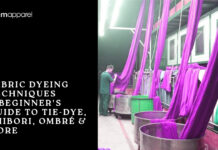You’ve spent months designing and producing your first clothing line, and now you’re ready to get it in front of customers.
While selling online and at local markets is great, having your line carried in retail clothing stores is the real dream. It’s difficult to enter stores, but you can succeed with the appropriate planning and tenacity. You must decide on your brand’s identity, create a persuasive pitch, locate the ideal retailers, establish personal relationships, and be prepared to start small.
It’s a challenging process, but seeing your designs on the racks and knowing you made them will make all the hard work worth it. If you’re dedicated and believe in your brand, you can get your clothing line into retail stores. Here’s how to get your clothing brand in stores:
How Do I Get My Brand In Stores?


How do I get my clothing brand into stores? Getting your goods into stores is an achievable first step to beginning your fashion empire with the appropriate wholesale plan and preparedness. To improve your chances of success as you begin the process of navigating the challenging realm of developing wholesale connections with fashion retail, keep in mind these suggestions.
Create A Business Plan And Branding Strategy.
To get your clothing line into stores, you need a solid plan. Branding my clothing line: Develop a business plan that maps out your mission, target customers, product line, marketing strategy, and financial projections. This will be vital for pitching to retailers.
Build Your Brand.
Identify your target audience and develop a brand that speaks to them. Create a memorable name and a logo that reflect your sense of fashion and brand. Build a professional website to help establish your company as a legitimate brand. Engage customers on social media to start creating buzz.
Reach Out To Small Boutiques First.
Contact smaller clothing boutiques and ask if they’re interested in carrying your line on consignment. This allows them to test out your product without taking a risk. If your items sell well, they’ll likely place larger orders. Offer promotional items like samples, hangers, and signage to help market your clothes in their store.
Attend Trade Shows.
Trade shows are a prime opportunity to get exposure to big retailers. Set up a booth to showcase your collection, hand out catalogues, and network with buyers. Be prepared to offer discounts and promotions to land initial orders. With the right product and persistence, you can get major chains interested in your brand.
Consider Sales Reps.
Hiring independent sales reps to represent your line can be an effective way to reach more retailers. Reps have connections and experience pitching to stores. They can endorse your brand and open the doors to larger accounts. Be prepared to pay sales commissions, but it may be worth the investment if reps can get your foot in the door.
With hard work and the right strategy, you can build awareness, land boutique accounts, meet bigger retailers at trade shows, and eventually get your line in stores across the country. Stay determined and don’t get discouraged. With time and effort, you can achieve your goal of getting your custom clothing manufacturer into retail stores.
Develop Your Clothing Samples And Lookbook.


To get retailers interested in your clothing line, you need professional samples and a stylish lookbook to showcase your designs.
Develop High-quality Samples.
Produce a few samples of each item in your collection to send to stores. Make sure they’re well-constructed using high-quality, durable fabrics and that all details are meticulously finished. Stores want to see that your products will hold up to customer use and washing.
Create An Eye-catching Lookbook.
A lookbook with product photos will bring your clothing line to life for retailers. Work with a talented photographer to shoot your samples in an aspirational setting. Focus on lifestyle images of models interacting, having fun, and embracing an enviable experience. Show your line’s versatility by including detail shots, close-ups of textures, and images of individual garments mixed and matched in different ways.
Tell A Compelling Brand Story.
In your lookbook, share the story behind your brand and products. Discuss your mission and values, design philosophy, target customers, and what makes your clothing line unique. Helping brands visualize how to get their clothing into stores will resonate with their customers and complement their other offerings. The more passion and purpose you convey, the more they’ll want to carry your line.
With professional samples, a gorgeous lookbook, and a compelling brand narrative, you’ll have everything needed to pitch your clothing line to stores hungry for the next big thing. Stay determined, keep pitching, and before you know it, your line will start appearing on retail racks!
Prepare Your Product For Retail Stores.
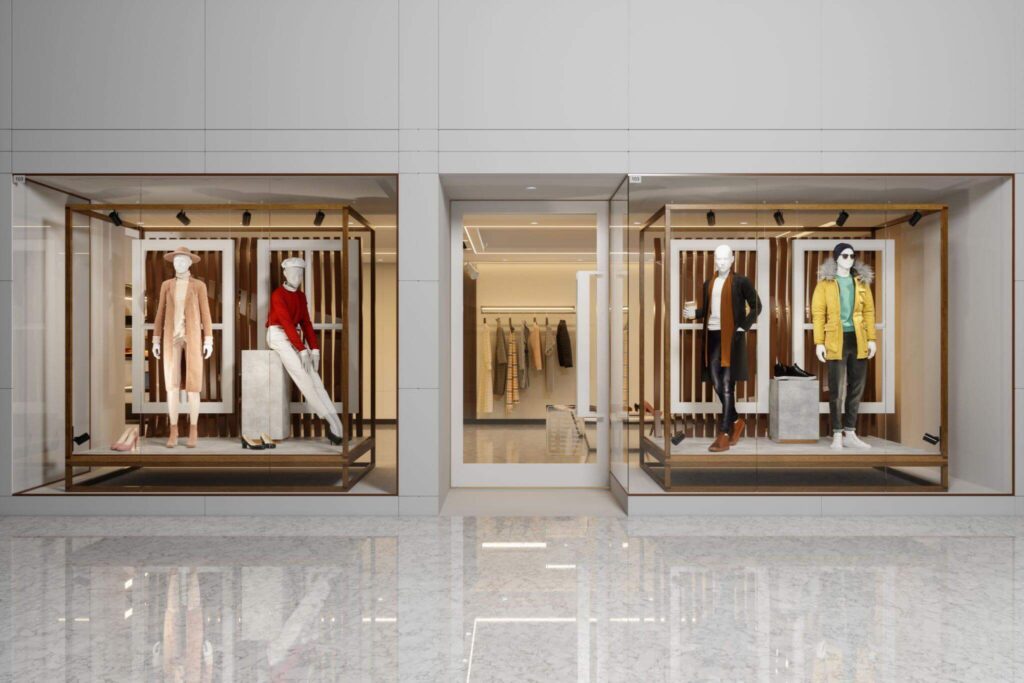

Once you have your clothing store started with design and manufacturing, it’s time to get it in front of customers. A wonderful strategy to raise awareness and boost sales is to sell to retail establishments. Take the following actions to get your product ready for retail:
Make sure you have enough inventory. Stores will want to see a minimum of 3–4 pieces in each size and colour before considering your line. They need to know you can supply them with adequate stock to meet demand.
Package your pieces attractively. Each item should be on a sturdy hanger and wrapped in clear plastic or tissue paper. This shows you value presentation and will ship products ready for display.
Create line sheets with product details and pricing. Line sheets provide an overview of your collection and allow buyers to see images of each piece along with wholesale and retail price points. They help stores determine if your line will be a good fit.
Build a website to showcase your brand. A professional website gives your clothing line credibility and allows stores to view your products at any time. Include photos of each piece, details on sizes and materials, as well as your brand story and mission statement.
Reach out to smaller boutiques first. Independent stores are more willing to take a chance on new designers. Once your line has a proven sales record, you’ll have an easier time getting into larger department stores. Start building relationships now for future opportunities.
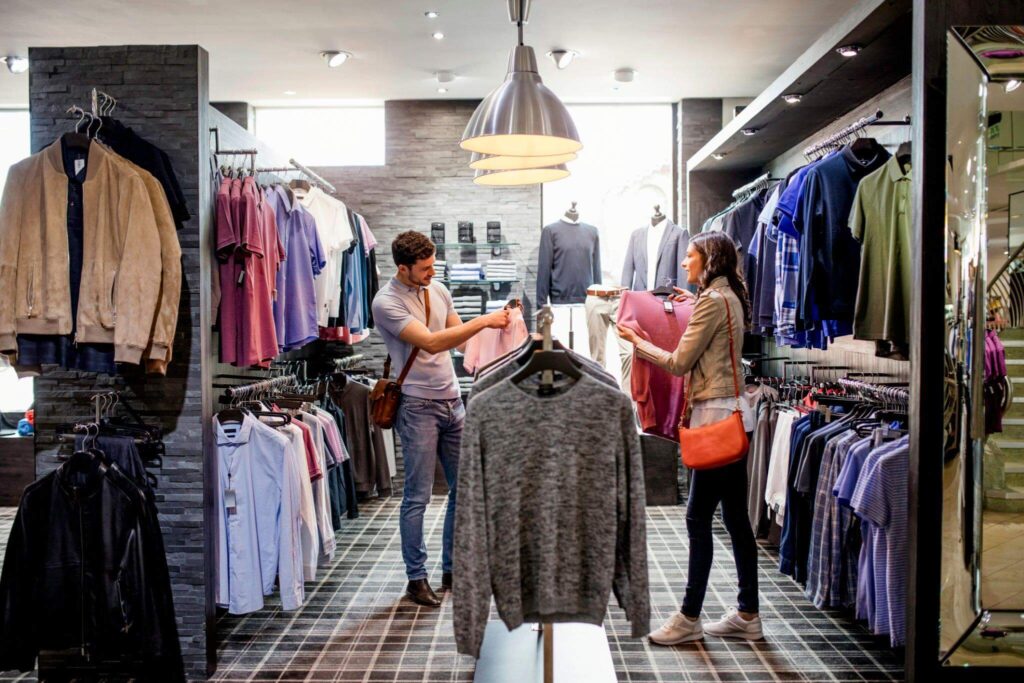

Be active on social media. Engage your target customers on platforms like Instagram and Facebook to increase brand awareness. Tag stores you’re interested in to increase your visibility to their buyers. Build buzz around new pieces in your collection. Strong social engagement shows stores that your line has an existing fan base.
With the right preparation, you can get your dream clothing line in front of stylish shoppers everywhere. Follow these tips, and don’t get discouraged if it takes time. Stay persistent, keep improving your collection, and the right stores will soon take notice!
Research Your Target Retail Stores.
Once you have a solid product line developed, it’s time to get your clothing into stores. How do you begin, though? Finding the appropriate stores for your brand to target is crucial.
Do Your Homework.
Research potential stores thoroughly before pitching them. Visit their website and social media profiles to understand their aesthetic and audience. See what other brands they carry to make sure yours aligns. Check if they accept submissions from independent designers and their requirements.
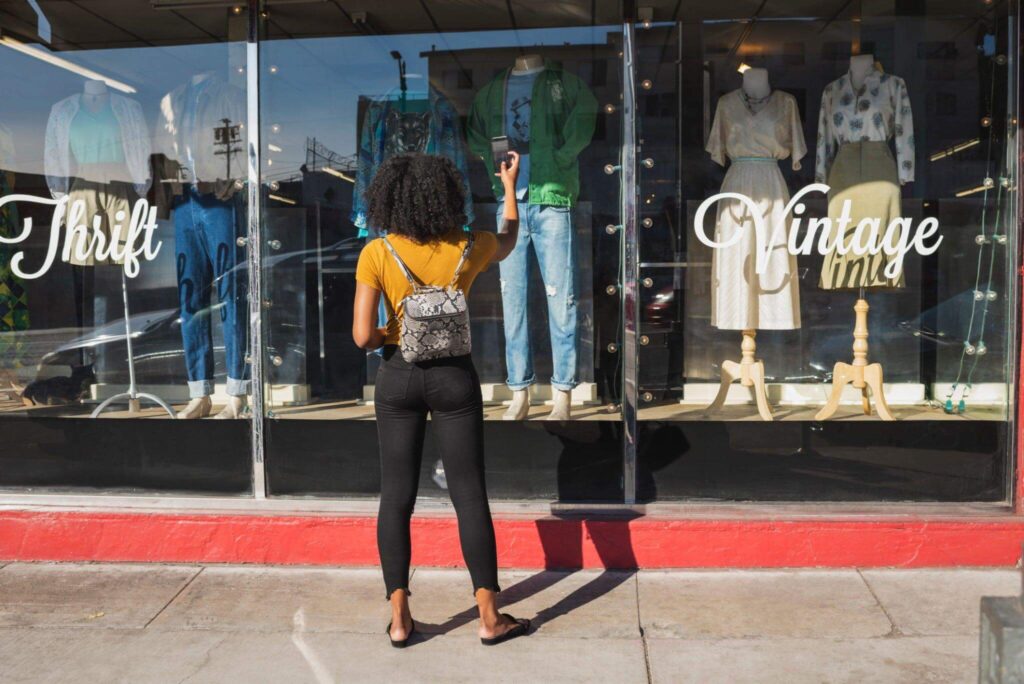

Some questions to consider:
- Who shops there? Demographics like age, location, income, lifestyle, etc.
- What’s their cost to clothing manufacturers? Make sure your line fits into their typical range.
- Do they have dedicated sections for showcasing new or independent designers? If so, your brand could be a great discovery for their customers.
- What’s their mission and vision? See if your brand’s values and story complement theirs.
- Do they host any annual competitions or events you could get involved in? This exposure could lead to a retail partnership.
- What’s the process for submitting your collection? Follow their guidelines exactly.
Doing in-depth research gives you the insights to thoughtfully pitch stores that you know would value what you offer. You’ll go into discussions with knowledge about how your brand meets their business needs and resonates with their customers. This preparation demonstrates your professionalism and passion for the partnership.
While rejection is part of the process, targeting retailers wisely will increase your odds of success. With persistence and the right match, you’ll gain a chance to build valuable retail relationships and see your clothing on the racks.
Make Contact With Buyers.
Once you have a solid product line developed, it’s time to get your clothing in front of buyers. Many independent retailers are open to carrying new brands, especially if you can demonstrate demand and quality. Here are some tips for contacting buyers:
Do Your Research.
Find stores that sell similar styles of clothing to build a targeted list of potential retail partners. Check their social media and website to understand their aesthetic and see if your brand is a good fit. Look for the buyer’s contact information on the store’s website or give them a call to ask for the appropriate person to contact regarding new brands.
Create A Professional Pitch.
Put together a pitch that gives a high-level overview of your company and product line. Share photos of your pieces, details on available sizes and price points, and any press or social media buzz you’ve received. Discuss your brand’s mission and target customer to show how you’d be a great addition to their mix of offerings. Offer to provide free samples for them to review in person.
Make Personal Contact.
Reach out to buyers through a phone call or email and express your interest in building a partnership. Reference the specific stores you think would be a great match and that you’ve done research into their brand. Ask if they’d be open to learning more about your clothing line and potentially carrying it in their stores. Offer to meet with them in person if possible to make a stronger connection.
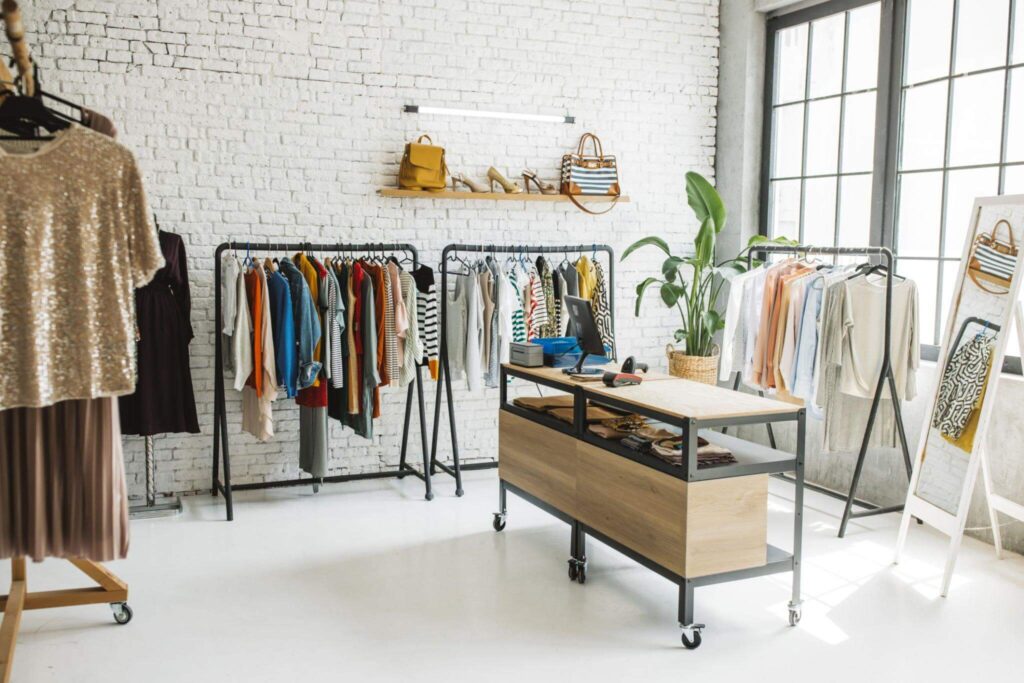

Be Prepared To Negotiate.
If a buyer expresses interest, be ready to discuss the details of a partnership, like:
- Wholesale pricing and profit margins for the retailer
- Minimum quantities they’d require to place an initial order
- Marketing support you’d provide like social media promotion, blog features, or in-store events
- Logistics of shipping and returns
- Exclusivity in their region or industry
With persistence and the right pitch, you can get your dream retail partners to carry your clothing line. Stay professional, highlight your unique value, and be willing to compromise to make a deal that benefits you both. Success is sweet, but the journey to get there requires patience and hard work. Keep going—your perfect retail match is out there!
Prepare Your Sales Pitch And Presentation.
Now that you have your line designed and samples made, it’s time to pitch it to retail stores. This is your chance to wow them with your brand and convince them to carry your clothing.
Prepare Your Pitch.
You’ll need to develop a persuasive sales pitch that highlights what makes your clothing line unique. Focus on benefits like high quality, innovative designs, locally made, eco-friendly fabrics, or affordable pricing. Share your brand’s story and mission to build an emotional connection.
Put together a professional presentation that starts with eye-catching photos of your samples. Include details on your manufacturing and distribution capabilities to prove you can fulfil large orders. Have copies of your line sheets with pricing, size ranges, and fabric details. Be ready to discuss your marketing plan to help boost their sales.
Schedule Meetings
Reach out to smaller independent stores first to build up your experience. Once you’ve landed a few accounts, approach larger regional and national chains. See if you can get a meeting with the buyer for your clothing retailer. Drop by their stores to get a feel for what they currently offer, so you can better demonstrate how your line will complement their mix.
In your initial email or phone call, highlight a few of your key selling points to capture their interest. Be professional yet enthusiastic to convey your passion for the brand. Ask if they’d be open to a short meeting where you can show them your collection in person. Most buyers appreciate an in-person visit as it allows them to see and feel the quality of your garments.
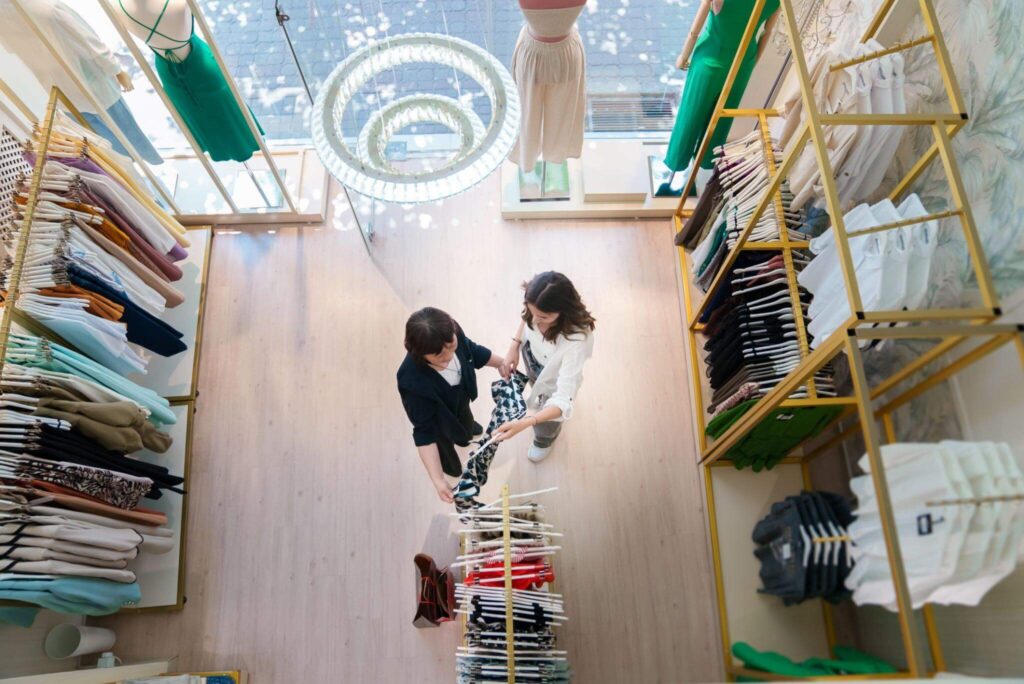

Deliver A Winning Presentation.
During your meeting, make eye contact, smile, and speak confidently about your line. Show photos and samples, point out unique details, and share stories about your pieces. Explain how you’ll support them with marketing materials and social media posts to help promote your products in their store. Ask open-ended questions to learn what they’re looking for and address any concerns they have.
With a compelling pitch, a strong collection, and the ability to fulfil their needs, you have a great shot at getting your clothing line in front of retail customers. Stay positive, focus on the benefits for them, and be willing to compromise. You’ve got this! Success is just an order away.
Conclusion
How do you put your brand on clothes? It takes a lot of work to start a clothing line, and for most designers, getting it into stores is their ultimate goal. The proper chance will ultimately arise if you keep putting your clothesline in front of them. When it does, be certain you are prepared to provide.
Increase your output, create buzz, and get ready to expand. After putting in a lot of effort to get this far, it’s time to expand your apparel line. Before you realize it, people wearing your creations will be seen in stores. Never stop trying to improve yourself or your craft, and never give up on starting a successful clothing business.


